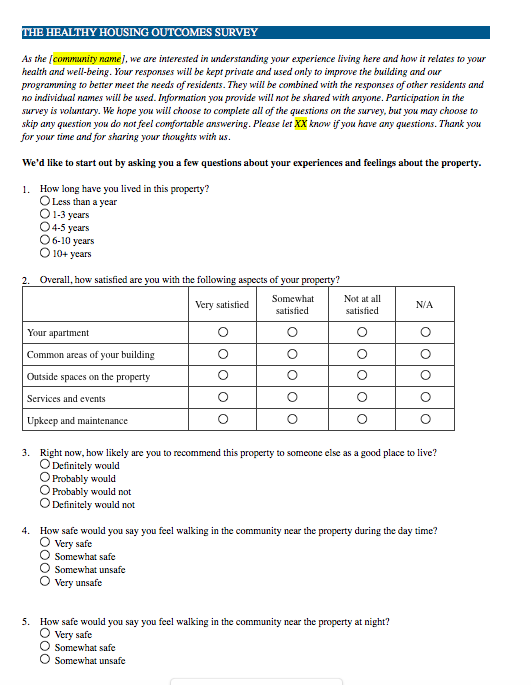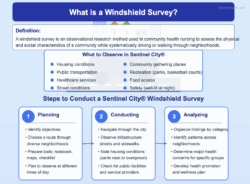Understanding the unique health landscape of any community is fundamental to fostering well-being and driving positive change. It’s not enough to simply guess what a population needs; effective interventions stem from truly knowing the challenges, resources, and priorities of the people you serve. This deep understanding is precisely why the concept of a community health needs assessment has become so critical for healthcare providers, public health organizations, and community leaders alike.

At the heart of a robust assessment lies thorough data collection, and one of the most powerful tools for this is a well-designed survey. But where do you even begin when faced with the task of crafting comprehensive questions that truly capture the pulse of a community’s health? That’s where a thoughtfully constructed community health needs survey template comes in handy, providing a structured yet flexible framework to gather invaluable insights and ensure no critical stone is left unturned.
Why a Community Health Needs Survey is Indispensable
Conducting a Community Health Needs Assessment (CHNA) is more than just a good practice; for many organizations, especially non-profit hospitals, it’s a crucial regulatory requirement, often mandated by the Affordable Care Act. This assessment process isn’t just about ticking boxes, though. It’s a profound commitment to understanding the health status, needs, and priorities of the communities they serve, leading to strategic planning and resource allocation that genuinely makes a difference where it’s needed most.
Imagine trying to improve health outcomes without knowing the prevalent chronic diseases, access barriers to care, or even the community’s perception of its own health. A comprehensive community health needs survey provides this foundational knowledge. It helps identify health disparities, pinpoint areas lacking adequate services, and highlight social determinants of health that impact well-being, from economic stability to neighborhood safety.
Beyond regulatory compliance, the insights gleaned from these surveys empower organizations to develop targeted interventions and programs. For instance, if a survey reveals a high prevalence of diabetes coupled with limited access to healthy food options, a community can then focus on initiatives like establishing farmers’ markets or nutrition education programs. This data-driven approach ensures that precious resources are utilized efficiently, addressing the actual rather than assumed needs of the population.
Furthermore, involving the community in the survey process itself fosters trust and strengthens relationships. When people see that their voices are being heard and their concerns are being acted upon, it builds a sense of ownership and partnership in improving collective health. This collaborative spirit is essential for the long-term sustainability and success of any health initiative.
What to Include in Your Community Health Needs Survey Template
- Demographic Information: Age, gender, race/ethnicity, income, education level, geographic location. This helps identify disparities.
- Health Status and Conditions: Self-reported health, chronic diseases, mental health, substance use.
- Access to Care: Insurance coverage, primary care access, specialty care, dental care, transportation barriers.
- Health Behaviors: Diet, physical activity, smoking, alcohol consumption.
- Social Determinants of Health: Housing, food security, employment, education, social support, safety.
- Community Resources and Needs: Awareness and utilization of existing services, perceived gaps in services.
- Quality of Life and Well-being: Stress levels, community connectedness, overall satisfaction.
Optimizing Your Community Health Needs Survey Template for Actionable Insights
Creating a truly effective survey goes beyond just listing questions; it’s about designing a tool that elicits meaningful and actionable data. One of the first considerations is tailoring your community health needs survey template to the specific nuances of your local area. While a general template provides an excellent starting point, no two communities are identical. Consider unique local challenges, cultural sensitivities, and existing assets to ensure your questions resonate with your target population.
Think about the best methods for distributing your survey. Will it be primarily online, through paper copies distributed at community centers, or a combination? Perhaps focus groups and one-on-one interviews will complement the quantitative survey data, providing richer qualitative insights into people’s experiences and perspectives. A multi-modal approach often yields the most comprehensive picture, ensuring that diverse voices within the community are heard and represented.
Once the data starts rolling in, the real work begins: analysis. It’s crucial to have a plan for how you will process, interpret, and present the findings. Look for patterns, correlations, and significant disparities. Visual aids like charts and graphs can make complex data more accessible and compelling for stakeholders. Remember, the goal isn’t just to collect data, but to transform it into actionable strategies that can genuinely improve community health outcomes.
Finally, a community health needs assessment isn’t a one-and-done event. Health needs evolve, demographics shift, and new challenges emerge. Establishing a cycle of regular assessment, perhaps every three to five years, ensures that your strategies remain relevant and effective. This ongoing commitment to understanding and responding to community needs is what truly fosters sustainable improvements in health and well-being.
- Clear and Concise Language: Avoid jargon and use simple, understandable terms.
- Logical Flow: Group related questions together and move from general to specific.
- Appropriate Length: Respect participants’ time; surveys that are too long often lead to drop-offs.
- Pilot Testing: Test your survey with a small group before wide distribution to catch any ambiguities or issues.
- Data Security and Anonymity: Assure participants their responses are confidential and protected.
- Accessibility: Offer the survey in multiple languages if applicable and consider formats for individuals with disabilities.
The journey towards a healthier community begins with understanding its pulse. By systematically gathering insights into needs, challenges, and aspirations, organizations can move beyond assumptions and build evidence-based programs that truly matter. This commitment to data-driven decision-making not only optimizes resource allocation but also fosters stronger bonds within the community, paving the way for collaborative solutions.
Ultimately, investing in a robust approach to community health needs assessment means investing in the future well-being of every resident. It’s about empowering communities to identify their strengths, address their vulnerabilities, and work together towards a shared vision of optimal health and flourishing lives for all.


